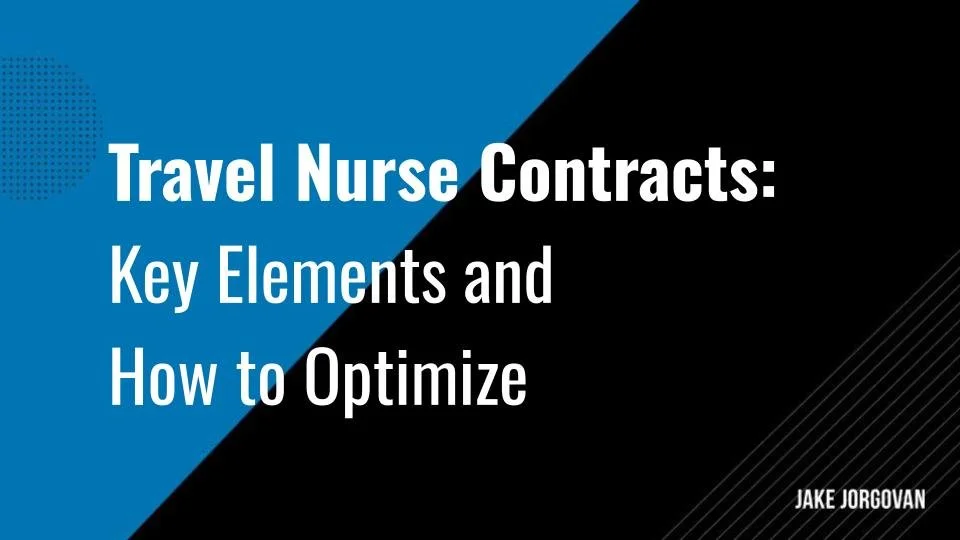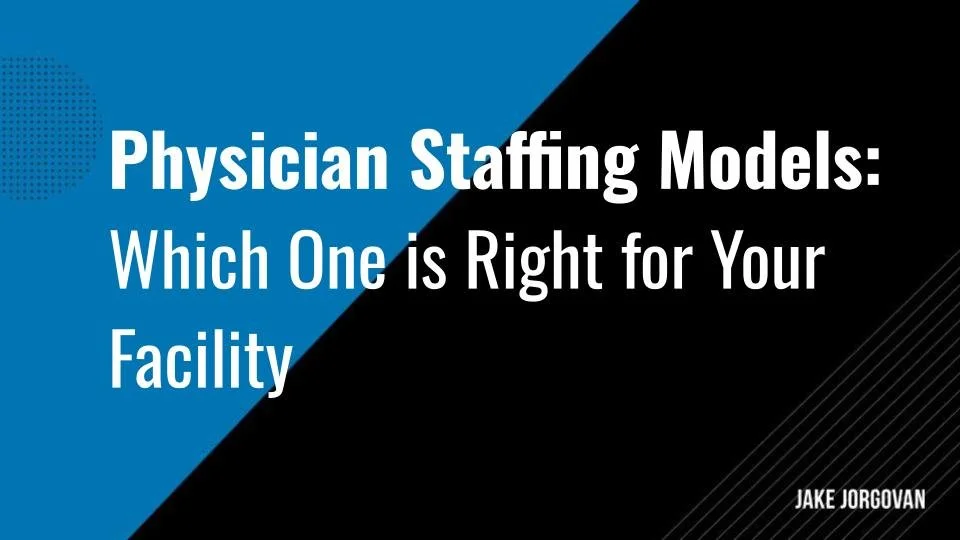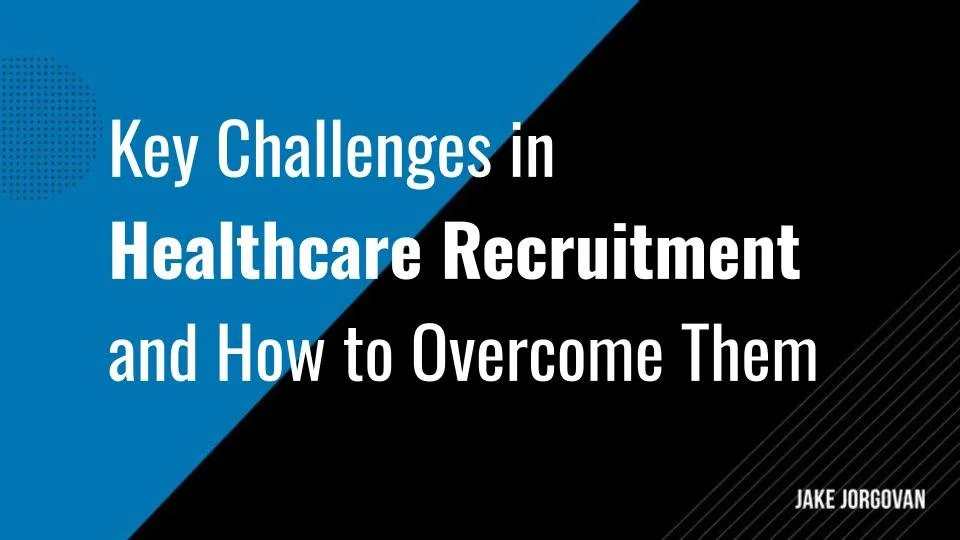How to Align Physician Recruitment Efforts with Organizational Goals
Aligning physician recruitment efforts with the specific goals and priorities of your healthcare organization is crucial for success.
Misalignment can lead to high turnover and decreased patient satisfaction.
Clear, strategic alignment means that recruited physicians meet both your immediate and long-term organizational needs.
This process involves understanding your healthcare institution’s mission, values, and objectives. Focusing on these elements can enhance operational efficiency and patient care quality.
In this article, we’ll explore effective strategies to achieve this alignment.
Keep reading to discover how to integrate organizational goals into your recruitment process for optimal results.
The Importance of Aligning Physician Recruitment with Organizational Goals
Aligning physician recruitment efforts with organizational goals is crucial for the success of your practice.
This alignment brings in physicians who share your strategic vision, which directly impacts the quality of patient care and overall organizational efficiency. When your recruitment strategy is aligned with your goals, every team member contributes to a unified mission, creating a cohesive and motivated workforce.
Having alignment in recruitment helps you attract the right talent with the necessary specialties and skills, which is vital for addressing specific healthcare needs. It reduces the risk of hiring mismatches that could lead to higher turnover and associated costs. Aligning recruitment with organizational goals also means that new hires will more likely thrive in your work environment, reducing the learning curve and increasing job satisfaction.
From an operational perspective, alignment helps efficiently allocate resources to recruitment efforts that matter most. It allows for better planning and anticipation of future staffing needs, avoiding service gaps, and maintaining a high standard of care.
Moreover, aligned recruitment strategies enhance your organization's reputation among medical professionals and institutions. This makes it easier to attract top talent, and this reputation strengthens partnerships with educational institutions, creating a reliable pipeline of future candidates.
6 Strategies for Aligning Physician Recruitment Efforts with Organizational Goals
1) Define Clear Recruitment Goals Aligned with Organizational Objectives
Aligning physician recruitment with organizational goals ensures strategic growth and high-quality patient care. Understanding how to set clear, targeted recruitment goals is crucial. This will drive your organization's success and strengthen your team's effectiveness. Here’s how to get started:
Identify Organizational Priorities: Start by understanding your organization's strategic plan. What are the key growth areas? Which specialties are most critical? Align your recruitment efforts to these priorities.
Engage Key Stakeholders: Collaborate with department heads and senior management. Their insights help pinpoint essential skills and specialties. This ensures your recruitment aligns with broader organizational needs.
Set Measurable Goals: Establish specific, quantifiable recruitment targets. Aim for goals like filling a certain number of positions within a timeline. Track progress regularly to stay on course.
Leverage Data Analytics: Use data to identify trends and forecast future needs. Analyze past recruitment successes and challenges. This data-driven approach helps refine your strategy.
Create a Detailed Plan: Develop a comprehensive recruitment plan. Outline each step, from job postings to onboarding. Ensure it aligns with your organization's goals and addresses identified needs.
Monitor and Adjust: Regularly review your recruitment strategy. Assess what's working and what's not. Be ready to make adjustments to stay aligned with organizational goals.
Insider Tip: It's helpful to conduct periodic surveys with your current physicians to understand their needs and challenges. This feedback helps tailor your recruitment strategy to attract candidates who will thrive in your specific organizational culture.
2) Focus on Cultural Fit and Shared Values
Recruiting physicians who align with your organization's culture is vital. It enhances team dynamics and boosts patient satisfaction. Focused recruitment makes sure that new hires integrate seamlessly into your existing structure. Here’s how to do it:
Understand Your Culture: Clearly define your organizational culture. Identify core values, mission, and vision. This clarity helps you recognize candidates who share these values.
Create Detailed Profiles: Develop comprehensive profiles for ideal candidates. Include desired traits, experiences, and attitudes. These profiles guide your recruitment efforts.
Use Behavioral Interviewing: Incorporate behavioral questions in your interviews. Ask about past experiences that reveal alignment with your values. Assess responses for cultural fit.
Involve Current Staff: Include current physicians in the interview process. Their perspective helps evaluate cultural compatibility and demonstrates your commitment to a cohesive team environment.
Leverage Technology: Use AI tools to screen for cultural fit. These tools analyze candidate responses and predict alignment. This step streamlines the selection process.
Communicate Clearly: Be transparent about your culture during recruitment. Share examples of how your values manifest in daily operations. This honesty attracts candidates who resonate with your ethos.
Insider Tip:
We suggest conducting a culture audit periodically. This audit identifies any shifts in your organizational culture. It ensures your recruitment strategy remains aligned with the current cultural environment.
3) Prioritize Specialties and Skills that Meet Organizational Needs
Prioritizing the right specialties and skills in your physician recruitment strategy directly impacts patient care quality and organizational efficiency. This approach ensures that you fill critical gaps and enhance your team's capabilities. To effectively prioritize, follow these steps:
Assess Current Needs: Start by evaluating your current staffing situation. Identify gaps and areas needing immediate attention. This assessment guides your focus on essential specialties.
Forecast Future Demand: Analyze trends and predict future needs. Consider factors like population growth, demographic changes, and emerging health issues. Anticipate the specialties that will be in higher demand.
Consult Department Heads: Engage with department leaders to understand their specific needs. They provide insights into critical skills and specialties. As a result, their input ensures alignment with departmental goals.
Develop Priority List: Create a ranked list of needed specialties and skills. Prioritize based on urgency and strategic importance. This list helps streamline your recruitment efforts.
Allocate Resources: Direct more resources toward high-priority areas. This includes budget allocation, advertising, and recruiter focus. Ensure high-priority positions receive the attention they need.
Review and Adjust: Regularly review your priorities and adjust based on changes in organizational goals, patient needs, and industry trends. Stay agile to maintain alignment with your evolving needs.
Insider Tip:
We recommend using a dynamic dashboard to track and visualize your recruitment priorities. This tool offers real-time updates and helps adjust strategies quickly.
4) Implement Data-Driven Recruitment Processes
Implementing data-driven recruitment processes can significantly enhance your efficiency and success rates. Data analytics help identify patterns, predict future needs, and streamline your efforts. To leverage data effectively in your recruitment strategy, follow these steps:
Collect Relevant Data: Gather comprehensive data on current staff, including demographics, specialties, and performance metrics. This data provides a foundation for analysis and planning.
Analyze Historical Trends: Examine past recruitment data to identify successful strategies and common challenges. Look for patterns in hiring timelines, candidate sources, and retention rates.
Identify Key Metrics: Determine which metrics are most important for your recruitment goals. Focus on metrics like time-to-hire, cost-per-hire, and candidate quality. These help measure and improve your processes.
Use Predictive Analytics: Apply predictive analytics to forecast future staffing needs. Analyze factors like turnover rates, retirement projections, and market trends. This helps anticipate and plan for future recruitment demands.
Optimize Sourcing Channels: Using data, evaluate the effectiveness of your current sourcing channels. Identify which channels yield the best candidates and allocate resources accordingly. This ensures efficient use of your recruitment budget.
Monitor and Refine: Continuously monitor your recruitment metrics. Use real-time data to make informed adjustments. This ongoing refinement enhances your strategy and aligns it with organizational goals.
Insider Tip:
We advise setting up a centralized recruitment dashboard. This dashboard integrates data from various sources, providing a holistic view of your recruitment efforts. Our agency can assist in creating and maintaining this dashboard to ensure you make data-driven decisions efficiently.
5) Create Strong Relationships with Medical Schools and Residency Programs
Building strong relationships with medical schools and residency programs is crucial for a robust recruitment pipeline. These partnerships provide access to a steady stream of qualified candidates and keep you informed about emerging talent. To establish and maintain these relationships, follow these steps:
Identify Key Institutions: Start by identifying medical schools and residency programs that align with your organization's needs. Focus on institutions known for excellence in the specialties you require.
Engage with Faculty: Develop relationships with faculty and program directors. Attend conferences and networking events. Your presence and interest in their work can pave the way for strong partnerships.
Offer Rotations and Internships: Provide medical students and residents with opportunities to complete rotations or internships at your facility. These programs provide hands-on experience and expose candidates to your organization.
Participate in Career Fairs: Attend medical school and residency program career fairs. Engage with students and residents to discuss opportunities at your organization. This visibility helps attract top talent.
Provide Educational Support: Offer scholarships, grants, and other forms of educational support. These initiatives demonstrate your commitment to their professional development. They also build goodwill and loyalty.
Stay in Touch: Maintain regular communication with key contacts at these institutions. Share updates about your organization and open positions. This keeps you top of mind when they recommend opportunities to their students and residents.
Insider Tip:
We suggest creating an alumni network for those who have completed rotations or internships with you. This network keeps past participants connected and engaged with your organization. Our agency can assist in setting up and managing this network to strengthen your recruitment efforts.
6) Develop Retention Strategies to Support Long-Term Organizational Goals
Developing retention strategies is essential for supporting long-term organizational goals. High physician retention rates lead to improved patient care and reduced recruitment costs. To create effective retention strategies, follow these steps:
Conduct Exit Interviews: Collect detailed feedback from departing physicians and understand their reasons for leaving. This information helps identify patterns and areas needing improvement.
Offer Competitive Compensation: Ensure your compensation packages are competitive. Include not just salary but also benefits, bonuses, and incentives. Attractive packages enhance job satisfaction and loyalty.
Promote Professional Development: Provide continuous learning opportunities. Support attendance at conferences, workshops, and additional certifications. This investment in their growth encourages long-term commitment.
Enhance Work-Life Balance: Address work-life balance issues. Implement flexible scheduling, offer part-time options, and provide wellness programs. A balanced approach reduces burnout and increases job satisfaction.
Foster a Positive Work Environment: Create a supportive and collaborative workplace culture. Recognize achievements, encourage teamwork, and maintain open communication. A positive environment retains top talent.
Implement Mentorship Programs: Pair new physicians with experienced mentors. Mentorship supports professional growth and integration into the organization. This guidance helps new hires navigate their roles effectively.
Insider Tip:
We recommend establishing a retention committee. This committee focuses on ongoing retention efforts and monitors physician satisfaction.
Find Talent That Aligns with Your Goals
Aligning physician recruitment with organizational goals is essential for long-term success. It demands a thorough understanding of your institution's mission and values.
Proper alignment improves patient care and operational efficiency.
Reflect on how each hiring decision impacts your overall vision because effective recruitment alignment is an ongoing process.
What steps will you take to ensure your next hire fits your strategic objectives?
Leverage the six strategies we analyzed in this article to make the best choice.
The future of your organization depends on the alignment of your recruitment strategies today.





































